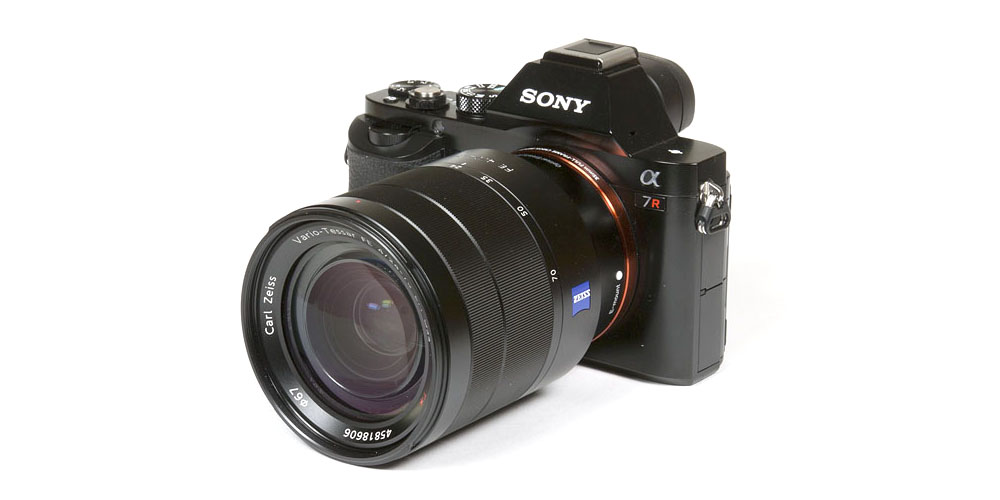
One of the key elements of a system is the availability of – hopefully decent – standard zoom lenses. Sony released two of them straight from the start of its new full format mirrorless cameras. There’s, of course, a cheap kit lens but in this review we will have a closer look at the more interesting one – the Carl-Zeiss Vario-Tessar T* 24-70mm f/4 ZA OSS. As you may have guessed from the Zeiss brand name, you have to be prepared to invest quite a bit here (MSRP: 1200US$/EUR). However, compared to a DSLR counterpart like the Canon EF 24-70mm f/4 USM L IS (1500 US$), the pricing is not really disproportionate.
In the very theory, mirrorless cameras allow an improved lens design compared to DSLRs simply because they don’t have the constraint of having a mirror in between the lens and the sensor. However, that’s only the theory. In practice, the shorter lens to sensor distances has been more of an obstacle because of the usual sensor characteristics (recessed photo diodes, sensor micro lenses, various filters in front of the sensor). Thus from a real life perspective, wide-angle lenses had a difficult time here so far. It’ll be interesting to see whether the Zeiss lens can overcome these issues.
The Vario-Tessar is a comparatively big lens for a mirrorless design – especially considering the small size of the Sony cameras. In fact it is almost as large as the mentioned DSLR counterpart albeit it’s somewhat more light-weight. The build quality is superb thanks to a tightly assembled metal body and smoothly operating focus and zoom control ring. The lens extends when zooming towards the long end of the range but there’s no wobbling whatsoever. The lens also features weather sealing. A petal-shaped lens hood (plastic) is supplied as part of the standard package.

We tested the lens on a Sony A7R which is not exactly renowned for its AF speed. However, unless you are into sports the performance is adequate. AF operations are also essentially noiseless. Typical for E-mount lenses, manual focusing works “by-wire”. The implementation is really good and allows very fine grained focusing. The lens also incorporates an optical image stabilizer which provides a equivalent gain of about 2-3 f-stops in real world situations.
| Specifications | |
|---|---|
| Optical construction | 12 elements in 10 groups inc. 5x aspherical and 1xED elements |
| Number of aperture blades | 7 (circular) |
| min. focus distance | 0.4m (1:5) |
| Dimensions | 73×94.5mm |
| Weight | 426g |
| Filter size | 67mm |
| Hood | supplied, petal-shaped, bayonet mount |
| Other features | Weather Sealing, Optical Image Stabilizer |
Distortion
As a user you can select whether your images shall be auto-corrected or remain in true RAW mode. In auto-corrected mode, there is, unsurprisingly, nothing to worry about. The distortions stay at less than 0.5% which is negligible. However, the situation changes completely when looking at the original characteristic of the lens. It shows a hefty ~3.8% barrel distortion at 24mm and a 3% pincushion distortion towards the long end of the zoom range. This is hardly impressive for such a pricey lens.
If you move your mouse cursor over the image you can switch to the corresponding auto-corrected results (there may be a short delay).
Corrected:
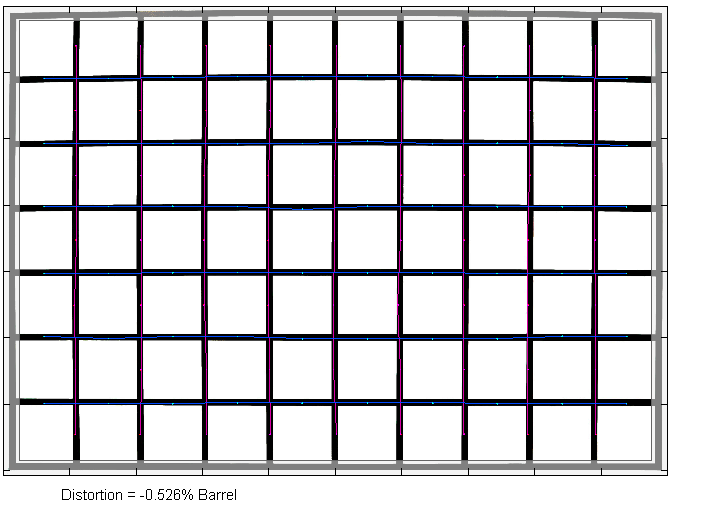
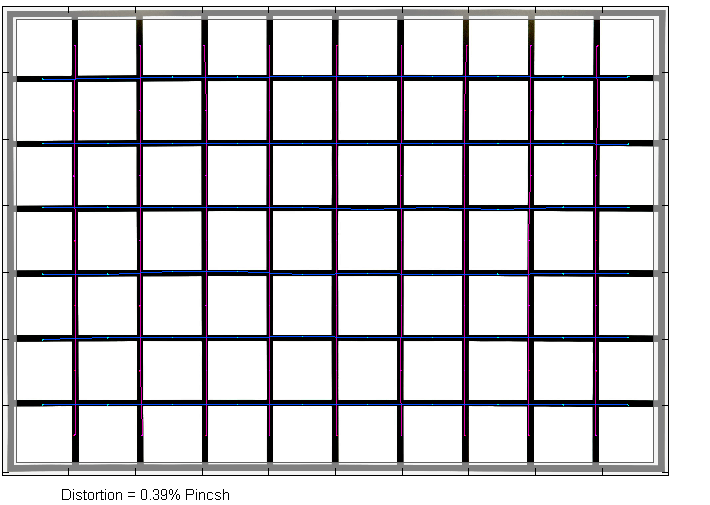
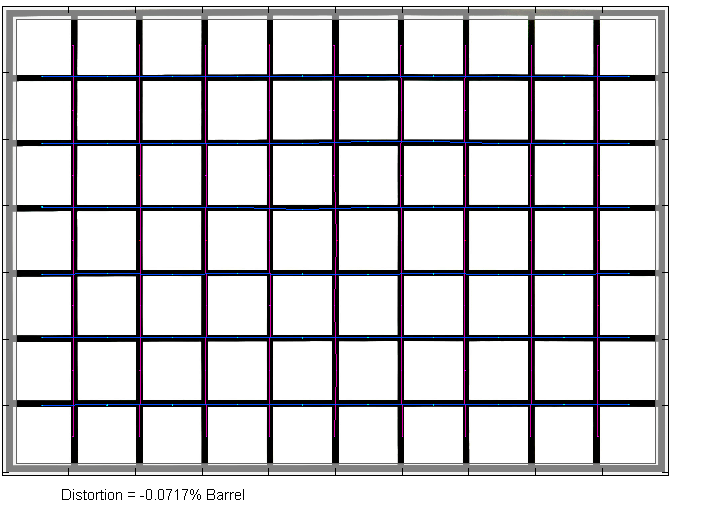
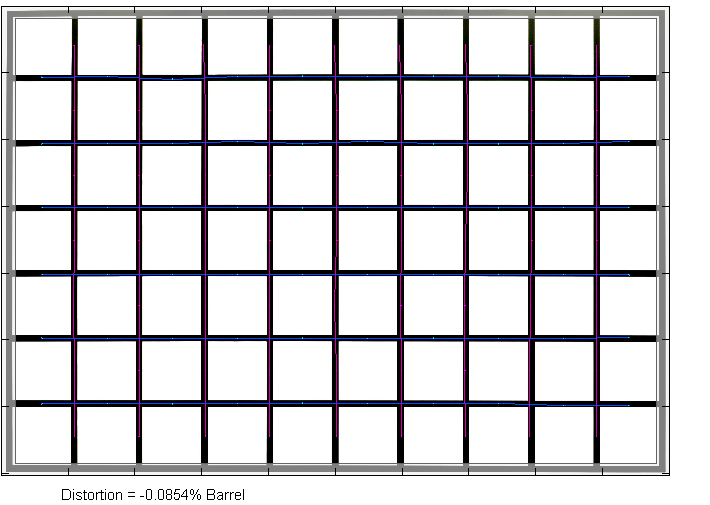
RAW:

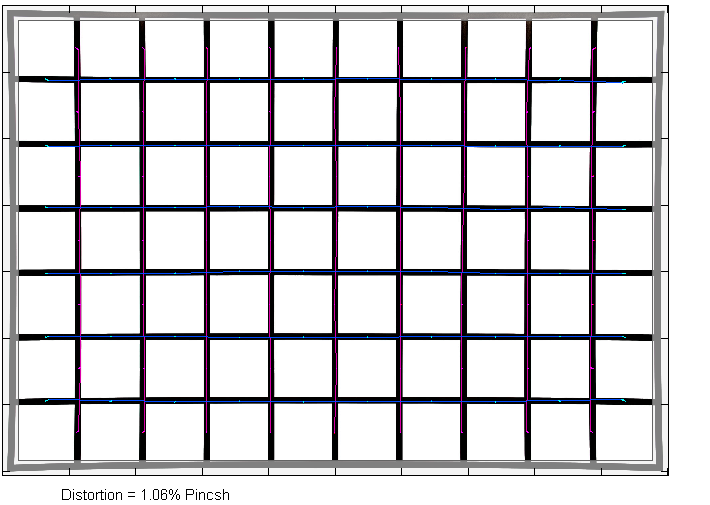
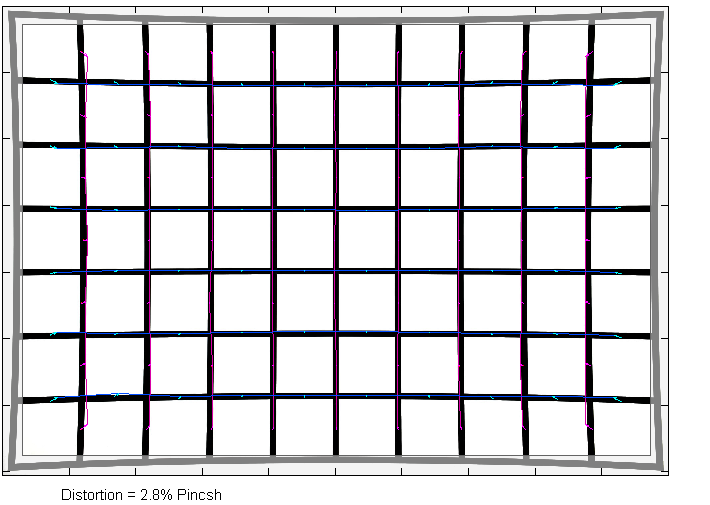

Vignetting
The auto-corrected light falloff at max. aperture is very moderate for a lens on a full format camera. At f/4, we are seeing a max. light falloff of 1EV (f-stops) at 24mm and even less so at other settings. Stopping down reduces the vignetting further albeit not significantly.
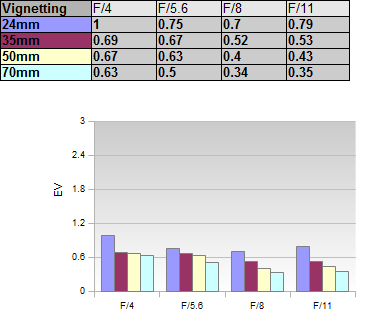
The situation changes when looking at the uncorrected data. At fully open aperture, the falloff is a hefty 2.5EV at 24mm. Stopping down to f/8 gives you ~1.1EV which is nothing to rave about either but it is acceptable for a full format lens. The issues eases at longer focal lengths where light falloff is mostly a moderate issue at f/4 only.
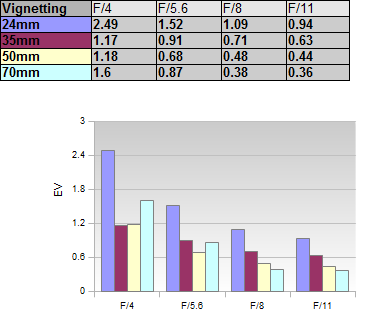
MTF (resolution)
The resolution characteristic is a mixed bag. At 24mm the center resolution is superb even at f/4. The border quality is generally good but the corners are fairly soft even at f/11. 35mm and 50mm are sweet spots with a good outer image field at fully open aperture and good to very good results at around f/8. The weakest spot of the lens is at 70mm with a moderate center quality and rather poor borders/corners. Stopping down to f/5.6 is advisable – also for an extra boost in contrast. The sweet spot is reached between f/8 and f/11.
The centering quality of the tested sample was good for a lens with an optical image stabilizer.
Please note that the MTF results are not directly comparable across the different systems!
Below is a simplified summary of the formal findings. The chart shows line widths per picture height (LW/PH) which can be taken as a measure of sharpness. If you want to know more about the MTF50 figures you may check out the corresponding Imatest Explanations.

Chromatic Aberrations (CAs)
Lateral CAs can be auto-corrected either by the camera or via Sony’s RAW converter. This is a lossless operation so it’s a good idea to take advantage of this. However, the Zeiss is also reasonably well corrected – at least when looking at the border zone where the average CA pixel width varies around the 1px mark. This is pretty good for a lens tested on a 36 megapixel camera.

That being said, the situation is quite a bit worse in the corners. Below is a sample crop which illustrates that the issue increases significantly here (about 3px). Again, this is nothing to worry about with activated auto-correction.
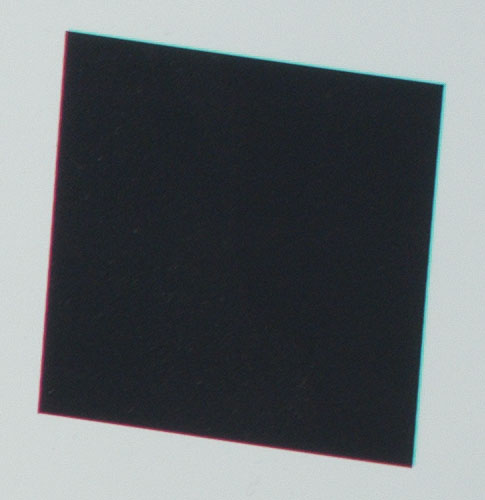
Bokeh
The Carl-Zeiss Vario-Tessar T* FE 24-70mm f/4 OSS ZA has a moderate max. aperture. However, on a full format camera you can still achieve a decent amount of out-of-focus blur in certain scenes. Unfortunately the bokeh (the quality of the blur) isn’t all that impressive. Out-of-focus highlights show an outlining effect plus a rather nervous inner zone.

The rendition in the critical focus transition zone is also quite harsh with distinctive halos at contrast transitions in the image background. The less interesting image foreground is somewhat better.

Sample Images
The Carl Zeiss Vario Tessar T* FE 24-70mm f/4 OSS ZA didn't really convince us completely - not at this price point for sure. While it is a joy to use the lens thanks to its high quality finish and super smooth controls, the optical characteristics aren't quite as impressive. Sony/Zeiss seems to follow the ugly trend of under-designing lenses based on the assumption that digital correction will fix the flaws. This may be an acceptable compromise when decreasing weight, size … and price. However, the Zeiss lens isn't really a hell of a lot more compact than e.g. the Canon EF 24-70mm f/4 USM L IS. Thus why is it necessary to design a lens with such massive distortions ? Now distortions aren't really a primary concern for most users but the lens is also not all that sharp - at least at the extreme ends of the zoom range. The corners are generally soft at 24mm and it's not all that hot at 70mm @ f/4 either - even with activated (lossy) distortion correction. This is rather surprising given the moderate max. aperture which should make things comparatively easy for the lens designers. The CAs are well corrected except in the corners at 24mm. The vignetting characteristic is rather typical for a full format lens in this class. However, another downside is the quite rough bokeh. Combined with the high price point, this offering leaves a couple of question marks. For sure it proves again that it isn't trivial to design a really good standard zoom lens for mirrorless cameras.
-
Optical Quality
-
Build Quality
-
Price / Performance

